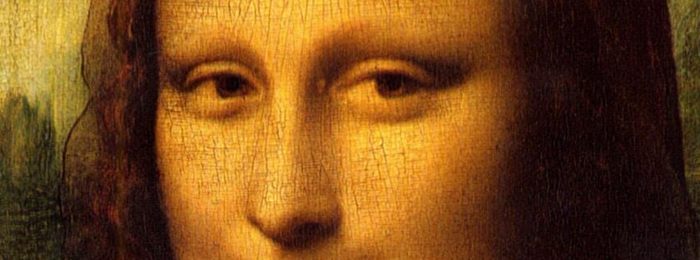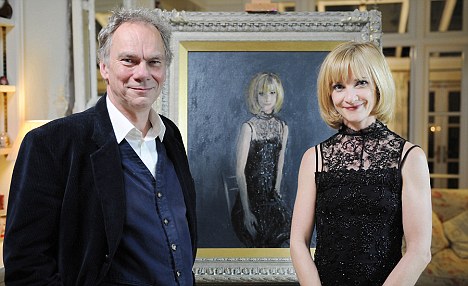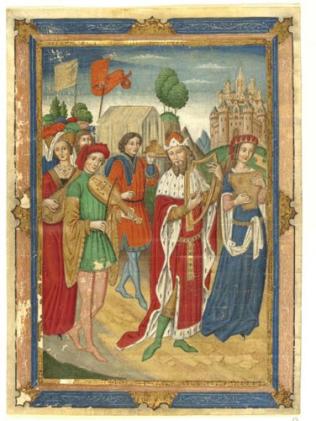On 14 Jul, 2015 With
Vitruvian Man Helps Decode the Mona Lisa The Yin and Yang qualities of the two cojoined forms of the Vitruvian Man and those of the Mona Lisa (both considered to be self portraits of Leonardo Da Vinci)help us to experience our own wholeness. This leads to greater peace and happiness. These Yin and Yang qualities are also found in the Star of David and Christian Cross. Leonardo said it best: “The outstretched arms and legs of a man form a square and a circle: the square symbolizes the solid physical world and the circle the spiritual and eternal. Man bridges the gap between these two worlds.” -Leonardo Da Vinci, “The Magical Proportions of Man” Leonardo Da Vinci’s Vitruvian Man (the…
Read More
On 4 Nov, 2012 With
The Most Expensive Pieces of Art We all know a picture is worth a thousand words, but how much is that in actual cash? Ultimately, a painting is worth whatever someone is willing to pay for it. Still, if the piece has historical, cultural or critical importance, the value of a painting will skyrocket. Auctioneers and art valuers use several criteria to determine exactly how desirable a piece ought to be. They look at the condition of the piece and its sales history. They compare it to the value of other works sold by the same artist and to other similar works done by different artists in the genre. They then look at the subject matter and compare that with…
Read More
On 2 Mar, 2011 With
Art Jokes: Cezanne and the laws of perspective
Read More
On 20 Feb, 2011 With
Art Jokes: Van Gogh’s Glasses
Read More
On 3 Jan, 2011 With
The true story of the downfall of an amateur artist who pulled off the world’s most audacious art fraud By LANEY SALISBURY The experts gathered at London’s Tate gallery watched in appreciative silence as two white-gloved curators carried the museum’s latest acquisitions into its boardroom. Paintings of birds by a highly regarded but little-known Fifties French artist named Roger Bissiere, they had been donated by Professor John Drewe, a distinguished scientist and businessman. On that April afternoon in 1990, everything about Drewe suggested that he was a gentleman of style and substance, from his pencil-thin moustache to his expensive suit. His bequests, however, were not all they seemed. Far from being the modern masterpieces Drewe claimed, they had, in fact, been…
Read More
On 30 Dec, 2010 With
The Spanish Forger is the name given to an unidentified individual who, in the late 19th to early 20th century, created a large number of forgeries of medieval miniatures. The Spanish Forger’s works were painted on vellum or parchment leaves of genuine medieval books, using either blank margins or scraping off the original writing. He also “completed” unfinished miniatures or added missing miniatures in medieval choir books. His works fooled many experts and collectors and appear today in the collections of many museums and libraries. Over 200 forgeries have been identified. Although he was originally thought to be Spanish, it is now believed he may have been French, working in Paris. A number of his forged miniatures have been identified as copied, with modifications,…
Read More
On 25 Dec, 2010 With
Kenneth Andrew Walton (born November 23, 1967) is an American software developer and author of the memoir Fake: Forgery, Lies, & eBay, which details his time spent selling forged art on the online auction site eBay. He currently lives with his wife in San Francisco, California. In 1999 and 2000 Walton was working as an attorney in Sacramento, California, and selling art on eBay, using more than 40 online aliases to drive up bidding on hundreds of his paintings. In May 2000 he posted an auction on eBay for an oil painting that attracted a closing bid of $135,805 and which bidders speculated might be a work by Richard Diebenkorn due to its resemblance to the artist’s work, the existence of the monogram “RD52” on the…
Read More
On 20 Dec, 2010 With
John Myatt, (born 1945), is a British artist and convicted forger who, with John Drewe, perpetrated what has been described as “the biggest art fraud of the 20th century”. Early life The son of a farmer, Myatt attended art school, and discovered a talent for mimicking other artists’ styles, but at first only painted for amusement and for friends. He worked as a songwriter for a time, and wrote the single “Silly Games”, a UK Top 40 hit for Janet Kay in 1979. He later worked as a teacher in Staffordshire. Painting When his wife left him in 1985, Myatt gave up teaching to spend more time with his children, and attempted to make a living by painting original works in the style of well known artists….
Read More
On 7 Sep, 2010 With
When this painting first appeared around 1930, it was praised as a work byBotticelli. Not long afterwards, however, the investigations of art historians and scientists revealed it to be an outright fake, made with the intention to deceive. Acquisition The noted art collector Lord Lee of Fareham bought the Madonna of the Veil in 1930 from an Italian dealer for the sum of $25,000. He subsequently bequeathed it to The Courtauld Gallery, London in 1947. Despite a lack of information about its origins, the picture was universally hailed by connoisseurs and academics as a masterpiece by Botticelli when it first arrived in London in the early 1930s. The directors of the Medici Society published the painting as a ‘superb composition of the greatest of…
Read More
On 13 Jul, 2010 With
Read More






